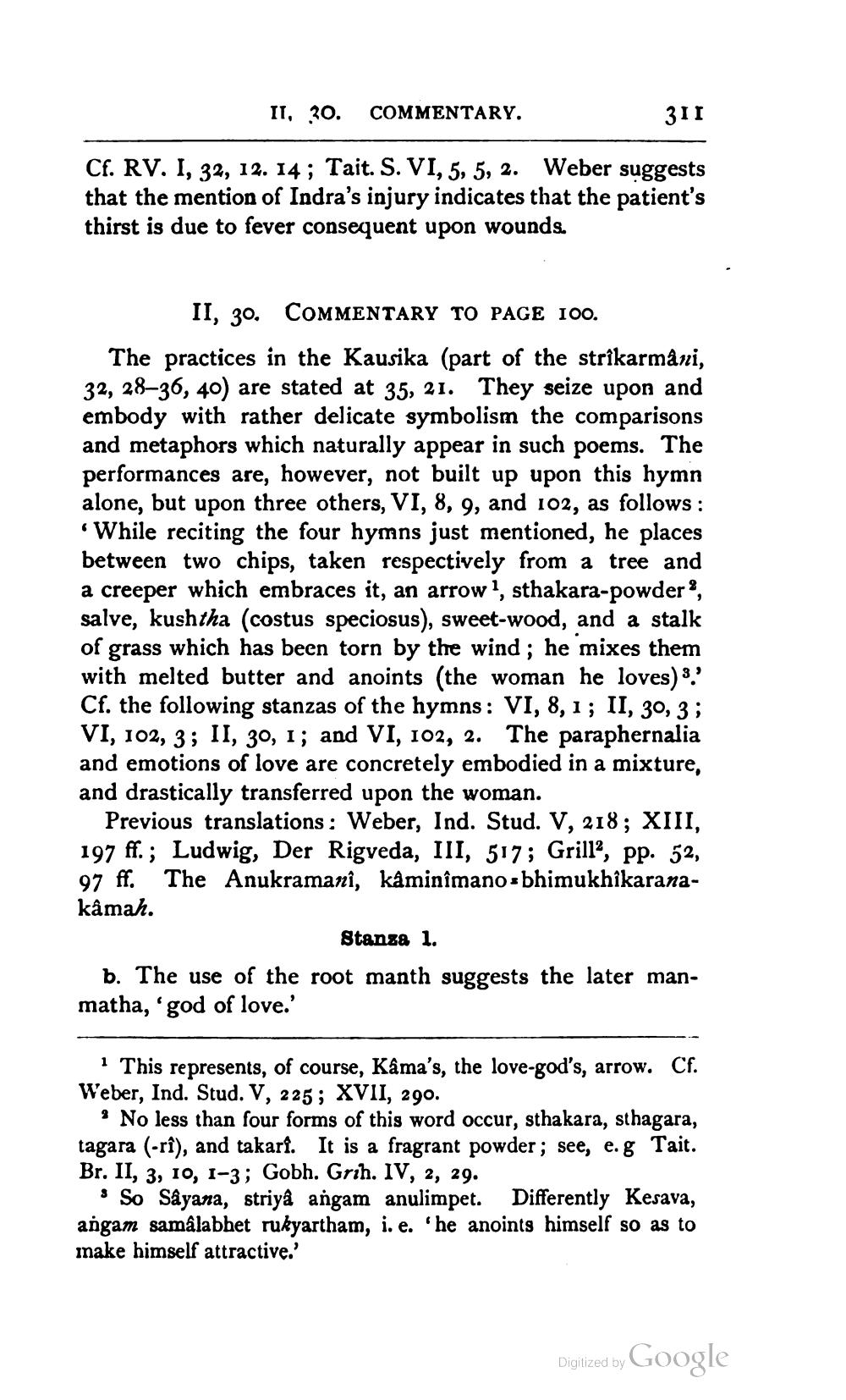________________
II, 30. COMMENTARY.
311
Cf. RV. I, 32, 12. 14; Tait. S. VI, 5, 5, 2. Weber suggests that the mention of Indra's injury indicates that the patient's thirst is due to fever consequent upon wounds.
II, 30. COMMENTARY TO PAGE 100. The practices in the Kausika (part of the strîkarmani, 32, 28–36, 40) are stated at 35, 21. They seize upon and embody with rather delicate symbolism the comparisons and metaphors which naturally appear in such poems. The performances are, however, not built up upon this hymn alone, but upon three others, VI, 8, 9, and 102, as follows:
While reciting the four hymns just mentioned, he places between two chips, taken respectively from a tree and a creeper which embraces it, an arrow!, sthakara-powder*, salve, kushtha (costus speciosus), sweet-wood, and a stalk of grass which has been torn by the wind; he mixes them with melted butter and anoints (the woman he loves) 3.' Cf. the following stanzas of the hymns: VI, 8, 1; II, 30, 3; VI, 102, 3; II, 30, 1; and VI, 102, 2. The paraphernalia and emotions of love are concretely embodied in a mixture, and drastically transferred upon the woman.
Previous translations: Weber, Ind. Stud. V, 218; XIII, 197 ff.; Ludwig, Der Rigveda, III, 517; Grill, pp. 52, 97 ff. The Anukramani, kaminîmanos bhimukhîkaranakamah.
Stanza 1. b. The use of the root manth suggests the later manmatha, 'god of love.'
1 This represents, of course, Kama's, the love-god's, arrow. Cf. Weber, Ind. Stud. V, 225; XVII, 290.
* No less than four forms of this word occur, sthakara, sthagara, tagara (-rî), and takarf. It is a fragrant powder; see, e.g Tait. Br. II, 3, 10, 1-3; Gobh. Grih. IV, 2, 29.
s So Sâyana, striya angam anulimpet. Differently Kesava, angam samâlabhet rukyartham, i. e. 'he anoints himself so as to inake himself attractive.'
Digitized by Google




